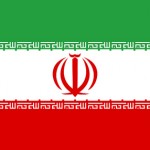
Image Credit
It is through negotiation that the impossible can be made possible no matter what negotiation styles or negotiating techniques are being used. A deal has been brokered between Iran and the rest of the world in regards to their work on creating an atomic bomb. For more than a decade Iran has been willing to put up with crippling international sanctions in order to continue to pursue its goal of creating an atomic weapon. However, recently everything has changed. How were the negotiators able to create a deal?
Change Opens New Doors In Negotiation
The reports on the state of Iran’s nuclear program have always been mixed. Research has been going on since 2003. A 2011 report by the International Atomic Energy Agency (IAEA) Board of Governors seem to indicate that Iran had started to perform specific tests that were designed to allow it to start to create nuclear weapons.
For years Iran has been engaged in a significant government backed program to develop nuclear weapons. They had made no secret of their plans. The world had reacted to this by levying significant sanctions against Iran. Life in Iran had become very difficult for many of its citizens; however, the Iranian president Mahmoud Ahmadinejad, was deeply committed to the country’s nuclear program for a variety of reasons.
The election in June of 2013 in Iran has ushered in Hassan Rouhani as the country’s new president. As with all change, this opened the door to a new round of negotiations. The West saw this change in government leadership as a new opportunity to try to determine if there was a possibility to negotiate an end to Iran’s nuclear ambitions.
Using A Two-Track Negotiation Strategy
These types of negotiations are always tricky to do – the spotlight of world attention would be on them. Within all of the countries involved in the negotiations, Iran especially, there would be many powerful forces who would be both for and against any deal being reached.
The U.S. played a key role in having the sanctions imposed on Iran and they would have to play a major role in any deal that would be reached. The U.S. had decided to peruse a two-track negotiating strategy. One track would be the one that was done publically – every step of the process would be reported in the papers and discussed endlessly on television. The other would be done in secret.
At the direction of the U.S. president, Barack Obama, the U.S. had been secretly reaching out Iran for the past 5 years. In August of 2013 things started to move faster after a letter was delivered from President Obama to Iran’s new president Hassan Rouhani. The secret talks were designed to build a foundation that would allow the public talks to move forward. The secret negotiations were successful in creating the elements of a deal and resolving the differences between Iran and the world powers. With the recent announcements that a deal has been struck, it’s clear that this two-track negotiating strategy has paid off.
What All Of This Means For You
The leadership of the country of Iran has finally agreed to a deal in which they will halt their development of nuclear weapons in exchange for having international sanctions against them lifted. This is an amazing event because for the past decade no such agreement had been possible.
The reason that negotiators were able to reach this deal now was because of changes that have occurred within Iran and the negotiating strategy that was used. Iran has a new president who has come into power promising that he would make changes that would make life easier for the citizens of Iran. Getting the international sanctions lifted is a key part of this. The negotiating teams knew that they needed to create a foundation for the negotiations to use. A secret two-track negotiating scheme was used to allow this foundation to be created.
Every principled negotiation can be judged by the results that it creates. The negotiations between Iran and the rest of the world have been nothing if not miraculous. What had seemed to be out of reach for so long is now almost a reality. The ability of the negotiators to continue to negotiate for such a long time clearly goes to show that in negotiating, it’s not over until it’s over!
– Dr. Jim Anderson
Blue Elephant Consulting –
Your Source For Real World Negotiating Skills™
Question For You: How important will verification be to this negotiated agreement?
![]() Click here to get automatic updates when The Accidental Negotiator Blog is updated.
Click here to get automatic updates when The Accidental Negotiator Blog is updated.
P.S.: Free subscriptions to The Accidental Negotiator Newsletter are now available. Learn what you need to know to do the job. Subscribe now: Click Here!
What We’ll Be Talking About Next Time
Although we can spend a lot of time talking about the best negotiation styles and negotiating techniques to use during a negotiation, sometimes just getting the appropriate parties together can be the biggest challenge of all. We live in busy times and the more people that have to be involved in a negotiation, the more complex organizing it can become. As a negotiator, we need to be aware of this and learn to work with it.
